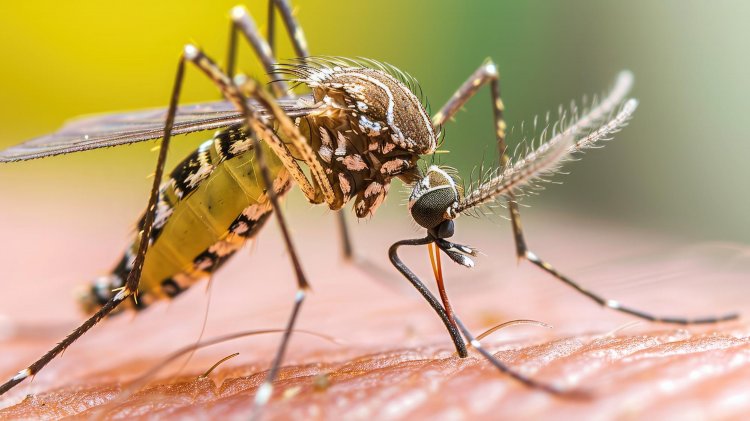From Tropics to Treatment: Navigating the Landscape of Leishmaniasis Control
Leishmaniasis, also known as Oriental sore, is a parasitic disease caused by protozoa of the genus Leishmania. Transmitted to humans through the bites of infected female phlebotomine sandflies, this disease affects millions globally, predominantly in tropical and subtropical regions. Leishmaniasis manifests in three main forms: cutaneous, mucocutaneous, and visceral. Each form presents distinct symptoms and requires specific treatment approaches.

Types and Symptoms of Leishmaniasis
Cutaneous Leishmaniasis (CL)
Symptoms
- The most prevalent form, presenting as one or more skin lesions.
- Initially appears as small papules or nodules, which can ulcerate over time, forming sores with raised edges and central craters.
- Lesions are typically painless but may become painful if secondary bacterial infection occurs.
- Healing can take months to years and may result in significant scarring.
Complications
- Lesions can cause severe disfigurement and disability, especially if they occur on exposed body parts like the face or limbs.
Mucocutaneous Leishmaniasis (MCL)
Symptoms
- Arises when Leishmania parasites spread from the skin to the mucous membranes of the nose, mouth, and throat.
- Symptoms include persistent nasal congestion, nosebleeds, difficulty swallowing, and ulcerations that can cause tissue destruction.
- MCL often develops months to years after the initial cutaneous infection.
Complications
- Without treatment, mucocutaneous leishmaniasis can lead to severe disfigurement, including the loss of nasal and oral structures, and can significantly impact quality of life.
Visceral Leishmaniasis (VL, also known as Kala-azar)
Symptoms
- The most severe form, affecting internal organs such as the spleen, liver, and bone marrow.
- Symptoms include prolonged fever, significant weight loss, splenomegaly (enlarged spleen), hepatomegaly (enlarged liver), and pancytopenia (reduction in blood cell types).
- Anemia, weakness, and fatigue are common due to the impact on bone marrow function.
Complications
- If left untreated, visceral leishmaniasis is usually fatal, primarily due to complications from secondary infections or severe anemia.
Diagnosis
Diagnosing leishmaniasis involves a combination of clinical assessment and laboratory tests:
- Microscopic Examination: Samples from skin lesions (CL), blood, or tissue aspirates (VL) are examined under a microscope to detect Leishmania parasites.
- Culture: Parasites can be cultured from clinical samples, though this method is time-consuming and requires specialized laboratory conditions.
- Serological Tests: These detect antibodies against Leishmania, particularly useful in diagnosing VL.
- Molecular Methods: Polymerase chain reaction (PCR) can identify Leishmania DNA in various clinical specimens, offering high sensitivity and specificity.
Treatment
The treatment strategy for leishmaniasis varies based on the form and severity of the disease:
Cutaneous Leishmaniasis
- Local Therapies: Options include cryotherapy (freezing the lesion), thermotherapy (localized heat application), and topical ointments like paromomycin.
- Systemic Treatments: Oral or intravenous medications, such as miltefosine, amphotericin B, or pentavalent antimonials (e.g., sodium stibogluconate), are used for more extensive or severe cases.
Mucocutaneous Leishmaniasis
- Systemic Treatments: Requires aggressive systemic treatment. Medications include amphotericin B, pentavalent antimonials, and miltefosine. Early and effective treatment is crucial to prevent severe tissue damage and disfigurement.
Visceral Leishmaniasis
- First-line Treatments: Liposomal amphotericin B and miltefosine are commonly used. Treatment regimens vary based on geographical region and resistance patterns.
- Other Options: Pentavalent antimonials and paromomycin may also be employed. Combination therapies are increasingly recommended to enhance treatment efficacy and mitigate drug resistance.
Prevention
Preventing leishmaniasis primarily focuses on reducing exposure to sandfly bites:
- Personal Protection: Use of insect repellents on skin and clothing, wearing protective clothing (long sleeves and pants), and sleeping under insecticide-treated bed nets.
- Environmental Control: Reducing sandfly habitats through environmental management, such as clearing vegetation and improving housing conditions to minimize sandfly breeding sites.
- Community Interventions: Public health campaigns to raise awareness and implement community-wide insect control measures.
In conclusion, Leishmaniasis remains a major public health challenge, particularly in endemic regions. Effective management relies on early diagnosis, appropriate treatment, and comprehensive prevention strategies. Continued research is essential to develop better diagnostics, treatments, and preventive measures. By enhancing understanding and response capabilities, health systems can better control and eventually reduce the burden of this debilitating disease.
Disclaimer
The information provided in this article is for educational purposes only and should not be considered medical advice. If you have any health concerns or are experiencing symptoms, it is important to consult with a healthcare professional, such as a doctor or clinic, for proper diagnosis and treatment. Always seek the advice of your doctor or other qualified health provider with any questions you may have regarding a medical condition. Do not disregard professional medical advice or delay in seeking it because of something you have read in this article.
Hashtags
#Leishmaniasis #Health #InfectiousDisease #PublicHealth #MedicalAwareness
What's Your Reaction?





















